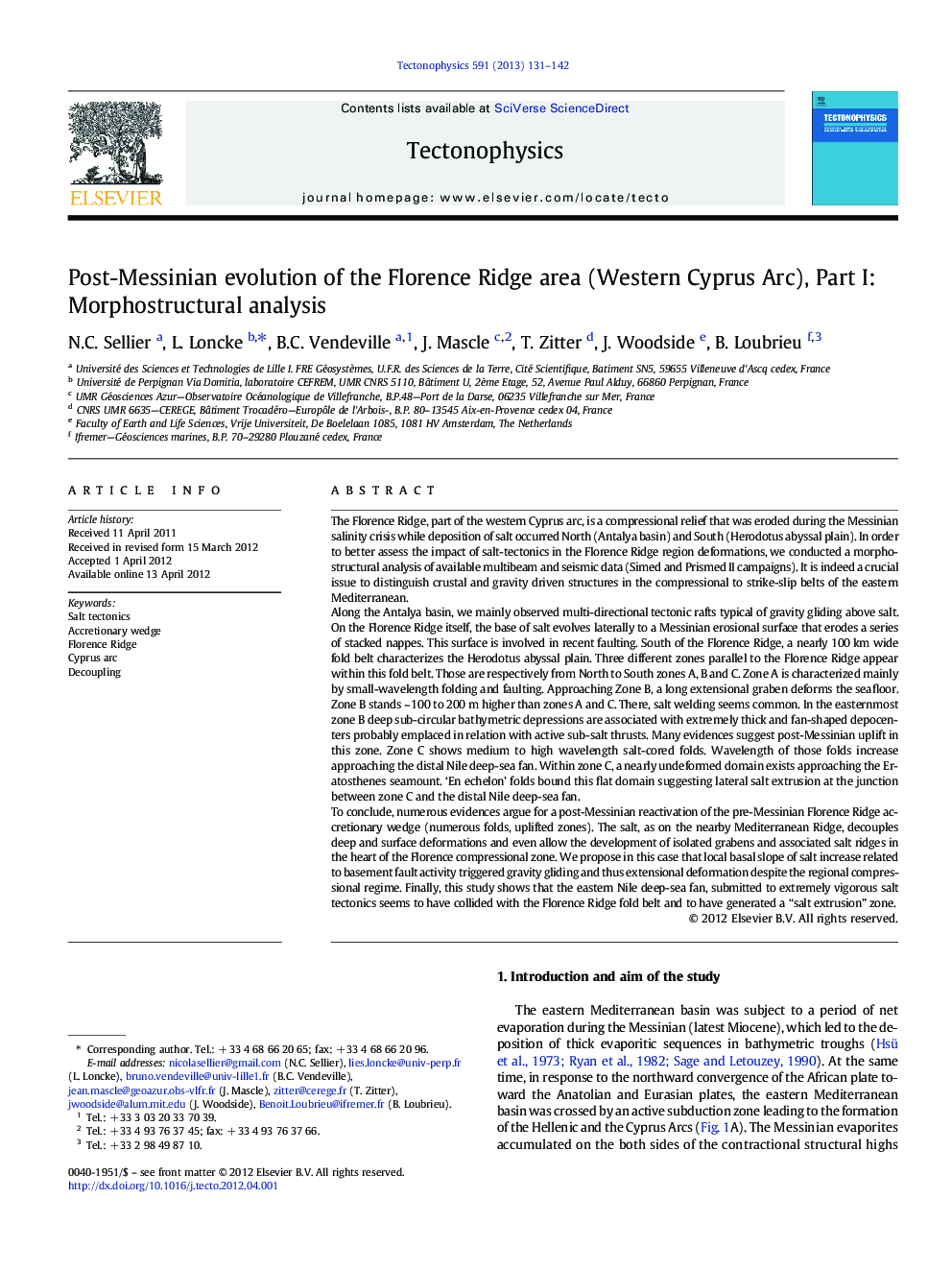| کد مقاله | کد نشریه | سال انتشار | مقاله انگلیسی | نسخه تمام متن |
|---|---|---|---|---|
| 4692421 | 1636794 | 2013 | 12 صفحه PDF | دانلود رایگان |
The Florence Ridge, part of the western Cyprus arc, is a compressional relief that was eroded during the Messinian salinity crisis while deposition of salt occurred North (Antalya basin) and South (Herodotus abyssal plain). In order to better assess the impact of salt-tectonics in the Florence Ridge region deformations, we conducted a morpho-structural analysis of available multibeam and seismic data (Simed and Prismed II campaigns). It is indeed a crucial issue to distinguish crustal and gravity driven structures in the compressional to strike-slip belts of the eastern Mediterranean.Along the Antalya basin, we mainly observed multi-directional tectonic rafts typical of gravity gliding above salt. On the Florence Ridge itself, the base of salt evolves laterally to a Messinian erosional surface that erodes a series of stacked nappes. This surface is involved in recent faulting. South of the Florence Ridge, a nearly 100 km wide fold belt characterizes the Herodotus abyssal plain. Three different zones parallel to the Florence Ridge appear within this fold belt. Those are respectively from North to South zones A, B and C. Zone A is characterized mainly by small-wavelength folding and faulting. Approaching Zone B, a long extensional graben deforms the seafloor. Zone B stands ~ 100 to 200 m higher than zones A and C. There, salt welding seems common. In the easternmost zone B deep sub-circular bathymetric depressions are associated with extremely thick and fan-shaped depocenters probably emplaced in relation with active sub-salt thrusts. Many evidences suggest post-Messinian uplift in this zone. Zone C shows medium to high wavelength salt-cored folds. Wavelength of those folds increase approaching the distal Nile deep-sea fan. Within zone C, a nearly undeformed domain exists approaching the Eratosthenes seamount. ‘En echelon’ folds bound this flat domain suggesting lateral salt extrusion at the junction between zone C and the distal Nile deep-sea fan.To conclude, numerous evidences argue for a post-Messinian reactivation of the pre-Messinian Florence Ridge accretionary wedge (numerous folds, uplifted zones). The salt, as on the nearby Mediterranean Ridge, decouples deep and surface deformations and even allow the development of isolated grabens and associated salt ridges in the heart of the Florence compressional zone. We propose in this case that local basal slope of salt increase related to basement fault activity triggered gravity gliding and thus extensional deformation despite the regional compressional regime. Finally, this study shows that the eastern Nile deep-sea fan, submitted to extremely vigorous salt tectonics seems to have collided with the Florence Ridge fold belt and to have generated a “salt extrusion” zone.
► Salt tectonics highly influence post-Messinian Mediterranean basin evolution.
► We examine the deformational style of the Florence Ridge area.
► Post-Messinian compressional reactivation is evidenced.
► Tectonic disharmony occurs below and above the salt layer.
► Collision of the distal Nile deep-sea fan with the Florence Ridge generates a salt extrusion domain.
Journal: Tectonophysics - Volume 591, 8 April 2013, Pages 131–142
